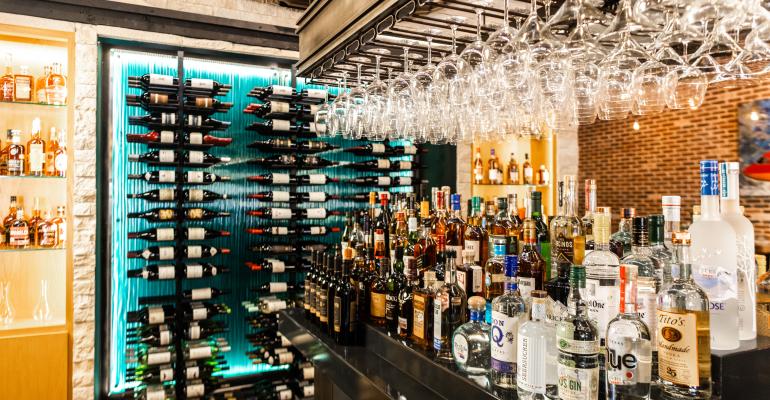Jon D’Angelica was living in the Bay Area, which he calls the “unofficial wine capital of the country,” when he realized there were no wine bars, despite its growing popularity.
“We started in 2007 on this basic, very basic notion of wine consumption in this country growing for multiple generations, uninterrupted growth — the kind of curve a Wall Street person would love to see, just slow, steady growth,” said District co-founder Jon D’Angelica.
“We understood this was an underserved market,” he said.
So, he and co-owner Ryan Vance went out looking for a venue. What they wanted was simple.
They thought, “Let’s build around it all the things that are missing that you can’t find in other venues. A great menu food menu again, really simple things that were missing — core music, sports on TV, or when sports weren't playing, we played vintage movies that were based in the Bay Area.”
The first location, in the South of Market Area — described by D’Angelica as the Meatpacking neighborhood of New York City before it got cool — was “a hit from day one.”
“We really touched on something that the market was missing,” D’Angelica said. “This idea that you can drink great wine without having to travel out to Napa.”
Rather than starting with food and building a bar menu around that, D’Angelica and Vance made wine the focal point and built the food menu around the extensive wine.
Guests could sample multiple kinds of wine without having a full glass, which D’Angelica viewed as a bonus for District. Customers could try wines from all around the world without committing to a full glass of wine but rather purchasing a sample size from the menu to go with the global foods.
“So that was the first part of our story,” D’Angelica said.
In 2012, District opened its second location, in Oakland. A lot had changed in the restaurant landscape in those five years, according to D’Angelica, including the popularity of craft cocktails, small batch spirits, and craft beer.
The space District took over in Oakland came with an inherited liquor license, so the restaurant decided that with the changing environment and this stroke of luck, it would focus on something besides wine: Whiskey.
D’Angelica found it was very similar to wine in that District could serve flights of whiskey, it went with the same kinds of food, and it had a cult following the same way some wines did.
District then opened in San Jose as a wine and whiskey bar. It was at that point that D’Angelica knew he had something good and was ready to move the concept to another location in the country.
Texas. Dallas-Fort Worth, to be specific.
“We really started looking at other markets to recreate what we did in the Bay Area by creating a regional brand, and kind of in that in a hub those three locations,” he said. “We wanted to do the same and so we landed on DFW and starting in Dallas, we opened our first location [in May] and our goal in DFW is to do the same thing we did in the Bay Area, opening three to five locations creating a local-slash-regional brand there and then moving on to other markets as well to do the same thing.”
There’s a lot of promise in the market.
“When you look at DFW, it’s bigger than the entire Bay Area,” D’Angelica said. “So, if we had three successful locations here without saturating the market, there’s a possibility [of] even more just in that DFW area. So, we’re really excited about that.”
District is also opening a location in the Oakland airport in December through a partnership with SSP America.
“In terms of brand exposure, you really can’t beat the number of eyeballs that come across your brand at an airport day-to-day,” D’Angelica said.

